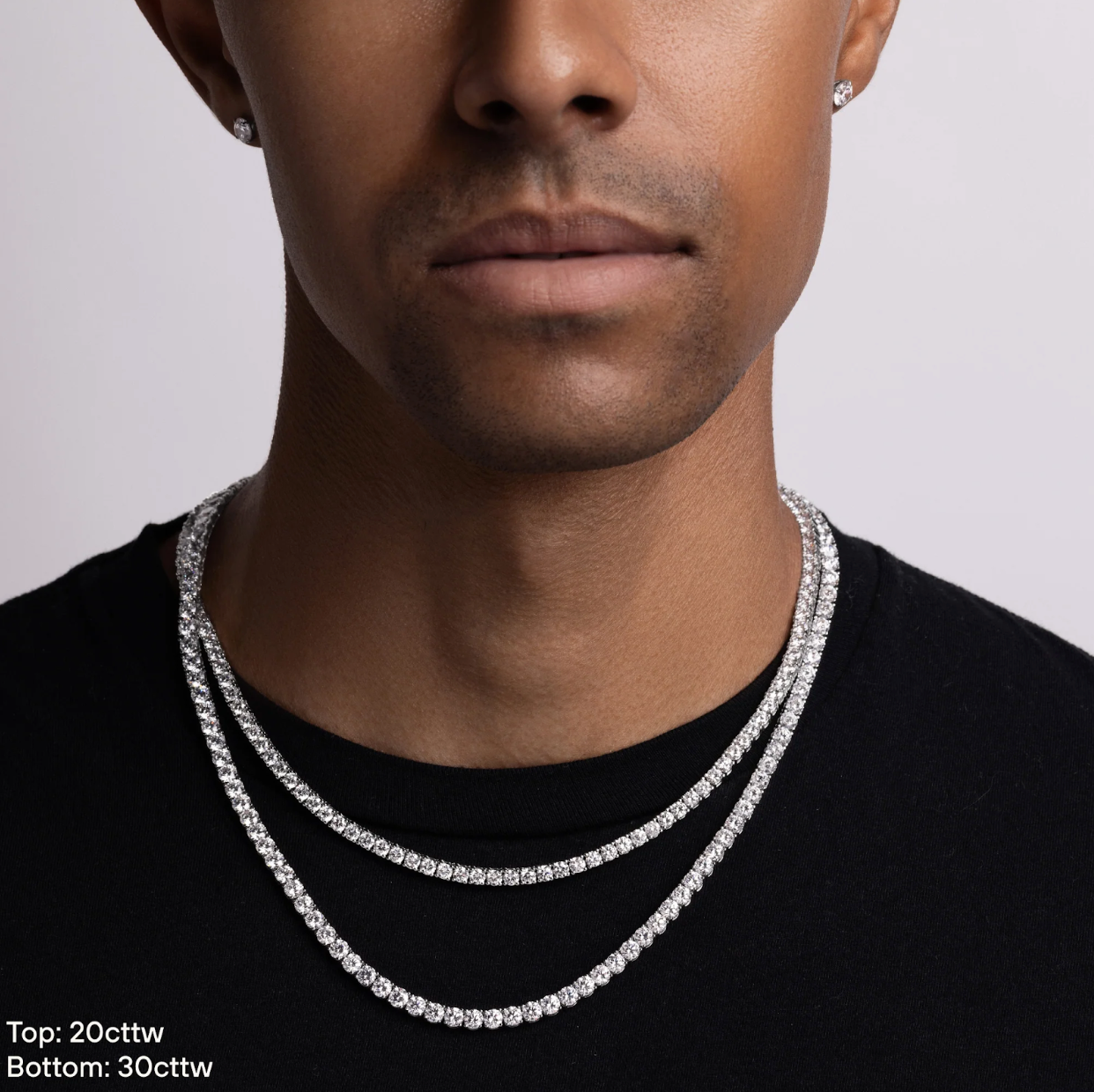When buying a diamond, there are four diamond characteristics that you need to consider: color, cut, clarity, and carat weight. Out of these 4 C’s of diamonds, do you know which is the most important?
Some personal preferences may argue that one of the 4 C’s of diamonds is more important than another, but all personal preferences must be put aside when looking at all the qualities of a diamond.
We’re going to explain the 4 C’s of diamonds in order of importance so that you know exactly what to look for the next time you pick out a diamond.
Which of the 4 C’s is the Most Important?
Out of the 4 C’s of diamonds, the cut of the diamond is the most important. This is followed by color, clarity, and carat weight.
Cut
Round brilliant diamonds will have one specific cut grade. Cut is classified as poor, fair, good, very good, or excellent. For all other shapes, the sparkle will be determined by the Polish and Symmetry. For example, you can have Polish be graded as “Very Good,” and Symmetry be graded as “Excellent.” Each diamond has a cut that determines the direction that the light will travel as it shines on the diamond.
The diamond's cut is the most important diamond characteristic because when it is good, very good, or excellent, it is what makes your diamond sparkle and shows the diamond quality. When light hits a diamond, the angles that have been cut inside the diamond cause the light to reflect like a mirror across from one another.
A diamond with a poor cut will reflect the light downward and hide much of its shine, while a diamond with a good cut will reflect the light outward for all to see.
You could buy a diamond with excellent clarity and color, but it’s the cut of the diamond that allows it to be seen. This is what makes the cut of the diamond the most important diamond characteristic.
- Diffused lighting: white light such as fluorescent lights in an office that has virtually no bright spots. Diffused lighting does not cause the diamond to burst with brightness. Instead, you can see shadows and depth created by the cuts within the diamond.
- Spotlighting: this type of light is being found more commonly through LED sources. Spotlighting is also what jewelry stores use in their cases to show off the diamond’s sparkle that is created from the cut. We recommend taking the diamond out of the case to ensure it shines in the diffused light the same way it shines in the spotlight.
- Combination lighting: this is a combination of both diffused and spotlighting. Combination lighting allows you to see both the depth of the diamond as well as the diamond's sparkle within the diamond.
You could buy a diamond with excellent clarity and color, but it’s the cut of the diamond that allows it to be seen. This is what makes the cut of the diamond the most important diamond characteristic.
Related: Lab-Created Diamond vs Natural Diamond
Color
The second most important of the 4 C’s is color. The color of the diamond is classified on a letter grading scale from D to Z, with D being the best and Z being the worst.
A diamond with a color grading scale of D, E, and F is excellent and considered a colorless diamond. There is no warmth to the diamond to the naked eye. G, H, I, J are classified as “near colorless.”
You mainly want to base this off of what you see to the naked eye. It’s important to remember that people in a lab are grading stones. A diamond does not go through a machine to be graded.
Clarity
All diamonds have flaws, but it is the number of flaws that a diamond has, along with the type of inclusion, and location that will determine its overall clarity.
Types of inclusions include: crystals, pinpoints, needles, etc. Inclusions can either be white or black carbon.
Diamonds are classified by a diamond clarity grade. The clarity grade ranges from flawless (FL) to included (I).
The diamond clarity grade is as follows:
- Flawless (FL) = perfect, no inclusions, no blemishes
- Internally Flawless (IF) = no inclusions but may have blemishes on corners or outside
- Very Very Slightly Included (VVS) = very minimal flaws difficult for a trained eye to identify
- Very Slightly Included (VS) = imperfections are visible at 10x magnification
- Slightly Included (SI) = most common in many engagement rings, imperfections are easy to identify at 10x magnification
- Included (I) = imperfections that can visibly be seen without magnification
Clarity is important because it is a factor that helps determine how valuable your diamond is. Diamonds with the least amount of flaws or imperfections are more valuable than diamonds with inclusions. Just like with color, you also want to base this off of what you see to the naked eye. Just because something looks poor on paper, the diamond in person honestly can still look great.
We always say that the imperfections of a diamond are the birthmarks of a diamond. As we mention in our Diamond Cut, Color, and Clarity video, no one is walking around with a 10x magnification when they look at your diamond, so that is very important to keep in mind when choosing your stone. As long as you love it, that is what matters most.
Carat Weight
Carat is also called carat weight because it refers to how much a diamond weighs rather than how big the diamond is. A one-carat diamond weighs 0.2 grams. Because diamond carat refers to how much a diamond weighs and not the size of the diamond, the carat weight is the least important of the 4 C’s of diamonds. Two diamonds with the same diamond carat weight but different shapes can be significantly different in size.
Related: How to Find Out Someone's Ring Size without Asking Them
Conclusion
All in all, you want to base your purchase off of what it looks like to the naked eye. Just how that saying goes… “don’t judge a book by it’s cover,” you also don’t want to judge a diamond by its certificate. If you need more information about the 4 C's of diamonds order of importance, check out our video about the Cut, Color, and Clarity of Diamonds.






Share:
How Are Rings Resized
Gold Wedding Rings: Mix and Match Tips - Happy Jewelers